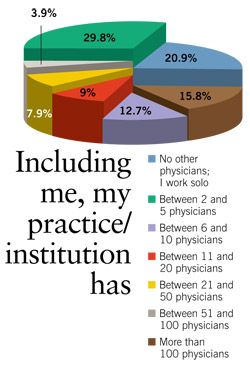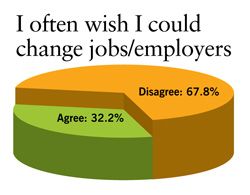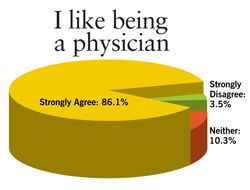- Clinical Technology
- Adult Immunization
- Hepatology
- Pediatric Immunization
- Screening
- Psychiatry
- Allergy
- Women's Health
- Cardiology
- Pediatrics
- Dermatology
- Endocrinology
- Pain Management
- Gastroenterology
- Infectious Disease
- Obesity Medicine
- Rheumatology
- Nephrology
- Neurology
- Pulmonology
Is Private Practice Dead?
And if solo practice if going away, does that mean physician-patient connection is getting lost, too?
According to The New York Times, private family practice is dead.
"The Disappearing Family Doctor" profiles 62-year-old Dr. Ronald Sroka, who has been unable even to give away, let alone sell, his struggling practice. He feels pressed to move patients too fast through his exam room, and can't make ends meet. The Times protrays him as metaphor for the end of genuine physician-patient relationships and the rise of bureaucratic, faceless medicine:
"Dr. Sroka’s fate is emblematic of a transformation in American medicine. He once provided for nearly all of his patients’ medical needs - stitching up the injured, directing care for the hospitalized and keeping vigil for the dying. But doctors like him are increasingly being replaced by teams of rotating doctors and nurses who do not know their patients nearly as well. A centuries-old intimacy between doctor and patient is being lost, and patients who visit the doctor are often kept guessing about who will appear in the white coat," writes Times reporter Gardiner Harris.
But it's far from clear that primary care medicine is all big business. Nor is it obvious that bigger practices mean less empathetic patient care.
The size of practices in 2011
While solo practices may be increasingly scarce, most group practices are still quite small. According to the American Medical Association, 80 percent of physicians practice in groups with fewer than 10 physicians.
That resonates with data collected by our sister publication, Physicians Practice. Its Great American Physician Survey 2010 also shows that most practices are on the smaller end of the spectrum, with more than half of all practices including just a handful of physicians:

SK&A, a company that sells direct mail lists of physicians, says solo physicians make up 53 percent of all physicians, and pegs the two physician practices at 18 percent.
And that doesn't even take volume into account. Private practices saw 320 million visits per 100 persons in 2008 (the latest data available), according to research by the National Center for Health Statistics. Hospital-based ambulatory care outfits? Just 36.8 million visits per 100 persons. Hospitals control a relatively small, if growing, share of the medical traffic, at least in many markets.
So, while consolidation is on the upswing, it's certainly far from clear that what we're looking at is faceless conglomerates. We've not moved from the family farm to Tyson. We've moved to small businesses.
The pain is real but some are OK with it
Still, there are plenty of primary care physicians who would rather not run a small business. That means dealing with staff strife, billing, even technology purchasing. There is no one to delegate to. And that hurts.
Still, many are OK with the pain. Even though they work don't work in solo practices, they still find time to connect. They are happy and are happy being physicians.
Physicians Practice's survey asked physicians to self-report their happiness, on a scale from 1 to 10. The median was 7.45. Most would keep their jobs, unlike Dr. Sroka.


So, does a move to larger group practices seem inevitable? How does it seem in your market? And, if you grow, does it necessarily mean faceless and less meaningful patient care?
Share your thoughts below.
Pamela L. Moore, Ph.D., oversses content and strategy at ConsultantLive.com (and its sister sites) and spent 13 years as a physician management consultant and as head editor at Physicians Practice.
